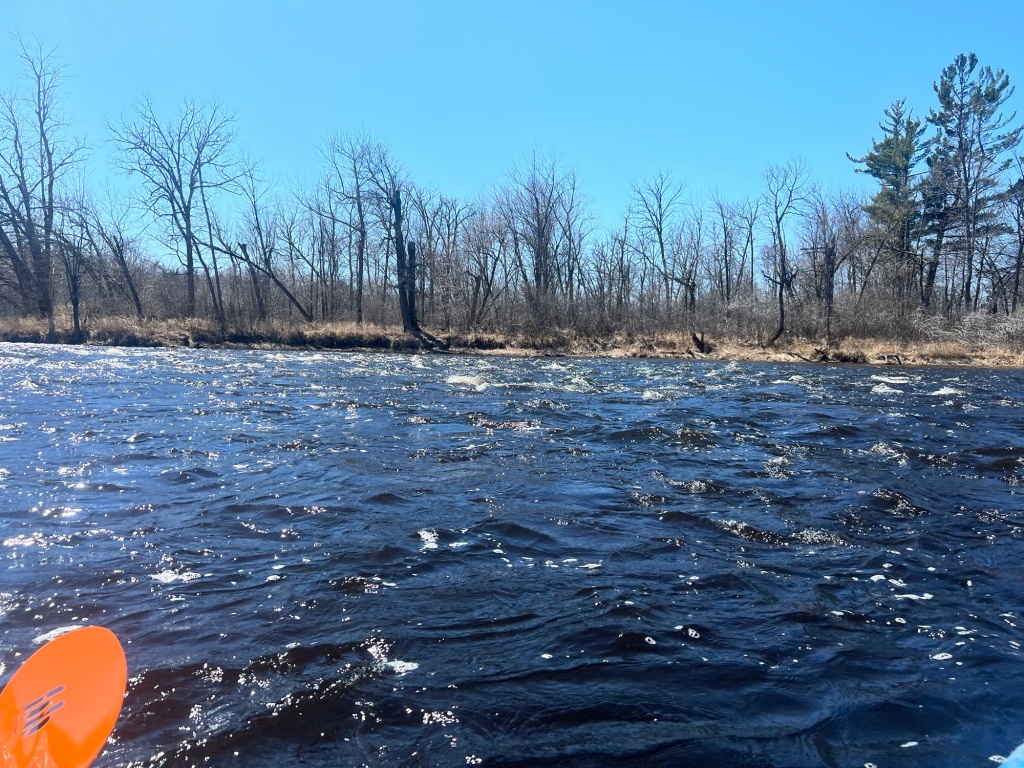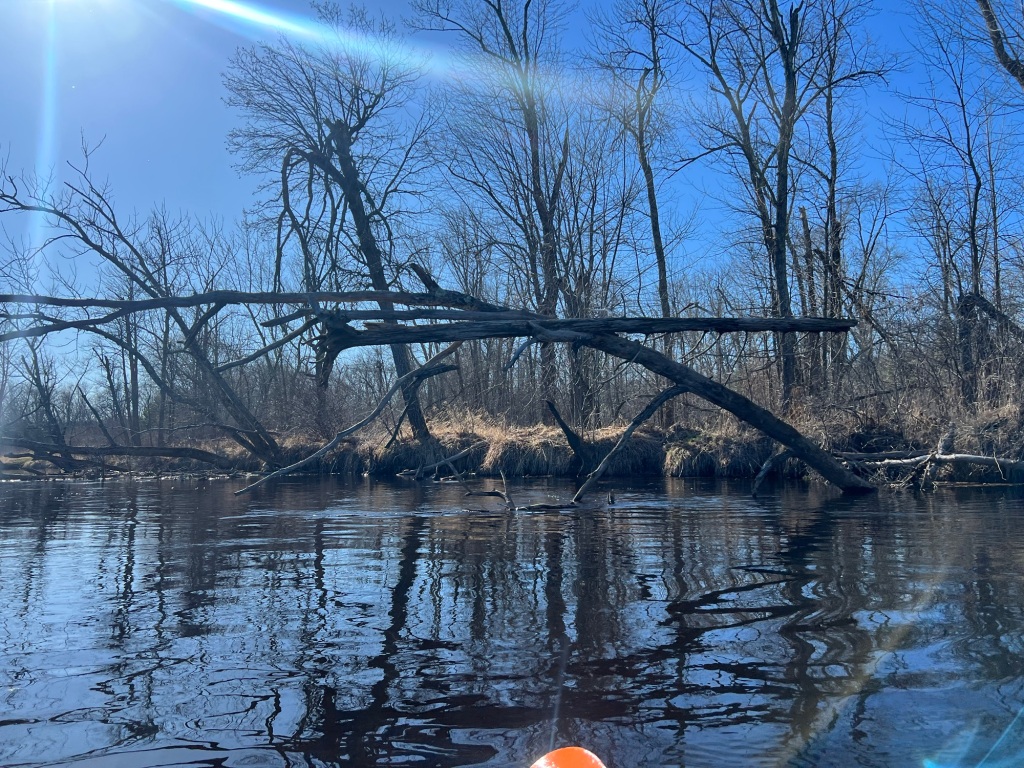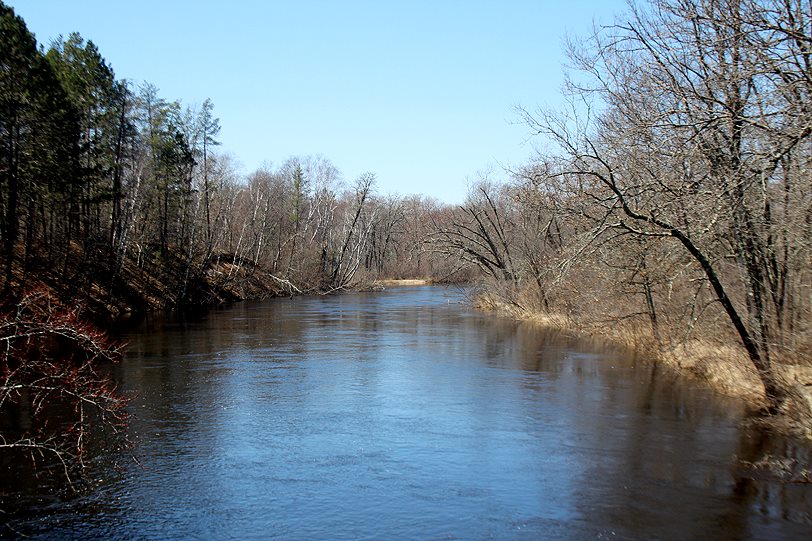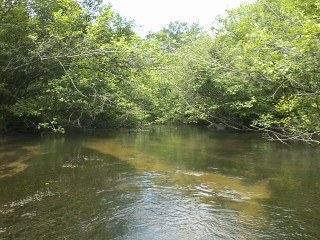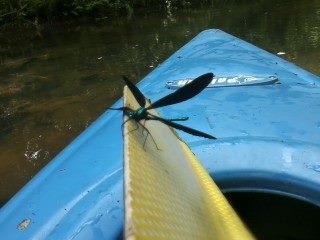Some days, you realize that past ‘frustrations’ actually get you better results when you didn’t know it could/would happen. It being a drought year, and a winter with little to no snow, I was anxious to get on the river in fear that the water would only go down. Well, the last week or so it’s rained enough, and the water levels went up… and the river was awaiting us with better conditions than a few weeks ago! I had said not to run it at low levels in the last post, and this had much more ideal wtaer levels than our first run.
We started out at Schoen Park, where I could barely see the rocks that held me back as I tried to get to shore a few weeks ago. The river was moving here, and we were on our way pretty quickly. We weren’t paying a lot of attention to mileage, but knew that Big Fish Trap Rapids were supposed to be about 2 miles past Dry Landing. I had read the descriptions of the rapids – the hardest on the whole river – before we took off, so we knew what to expect. As we went along, I mentioned some riffles ahead. We were into them. And then… it seemed that they were … likely THE Big Fishtrap Rapids. They are about 150m long, and not a hard bunch to get through at all (with good water levels). The hardest part was that they continued on, and then were larger at the bottom (some waves that got us wet). Ryan’s comment was ‘if these are riffles, then…’ Once through it, he also was thankful he didn’t have to build up to them and worry, but just went through them without stressing. Ryan had seen a campsite right before them which confirmed that they were indeed the rapids we were looking for.


There’s another set of small rapids right under the CCC Bridge (Little Fish Trap Rapids) that spit you into Little Fishtrap Eddy. The map is confusing on where you have to get out for the landing itself – we hopped out before the bridge, but the actual landing is after the bridge off of the eddy, and you walk across the dirt road to the bathroom. Launching into the rapids under the bridge is a trick, since you need to aim for the center of the opening to hit it correctly. We both pulled it off and were on our way to the mostly flatwater portion of the day.


We continued on, a few miles until the confluence with the Namekagon. Campsite 127.6 is a group site and doesn’t look like it is used much (with a nice grass bank to get out on). Below campsite 136.5, there were some more riffles, faster water. Eventually, we entered, or the Namekagon entered our path, the river widening. I recently read that the Namekagon actually has more water in it at this point, which does make sense since it is longer where they meet. I could see where Perkins Creek also entered the river from the opposite side not long after the Namekagon.
There are islands (including Big Island with Big Island Slough to river right) to go around and some faster water to contend with, but nothing too challenging. There are three campsites in the last two miles of the trip. They are all on river right, and the first one has a sign on an island to keep right (it’s not on the island, but you have to make the correct turn there). The other two are on the same side too, and eventually the landing is on the right side (with its own campsite first) as well. This was a fun section to do in higher water, and a first entering the confluence from this direction (I’ve entered it at least three times from the Namekagon/Totogatic, looking longingly north, wondering what’s around the riverbend).

Paddled May 4, 2024
I used NPS maps for this section. I did reference Paddling Northern Wisconsin by Mike Svob and Canoeing the Wild Rivers of Northwestern Wisconsin by Northwest Canoe Trails, Inc. They recommended that the part above CCC Bridge be done in the spring with medium to higher water levels. The second book has names for all of the rapids and fishing holes.
Weather: upper 50s into the 60s, occasionally windy, cloudy turning to sunny
Time paddling: 3.25 hours
Water level: 2200 ft3/s at Danbury at 1 pm (it had peaked at 2430 the day before)


